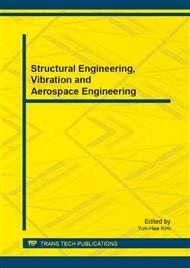p.3
p.7
p.11
p.15
p.20
p.26
p.30
p.34
p.38
Dynamic Properties of Steel Fiber Concrete under the Action of Noncyclic Variable Amplitude Load
Abstract:
Uniaxial dynamic compression tests were carried out on the triaxial testing machine to investigate the effect of noncyclic variable amplitude load. The characteristic of steel fiber concrete and differences among static uniaxial loading testing and dynamic uniaxial testing were studied systematically. It is shown that both the strain and the stress are directly proportional to the cycle frequency. Meanwhile, as the cycle amplitude increases, the irreversible plastic deformation increases gradually. And increasing the strain ranges, the stress strain curve becomes sparser. The comparison tests indicate that the peak stress relies on the loading modes. Under noncyclic variable amplitude load, the peak stress is higher than that of the static uniaxial load testing and the dynamic uniaxial testing, but the peak stress of the type corresponding to different frequency shows no evident difference.
Info:
Periodical:
Pages:
20-25
Citation:
Online since:
December 2013
Authors:
Price:
Сopyright:
© 2014 Trans Tech Publications Ltd. All Rights Reserved
Share:
Citation:


